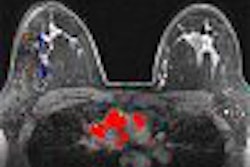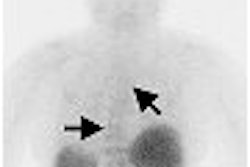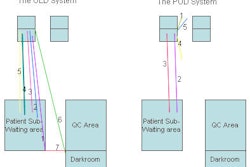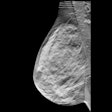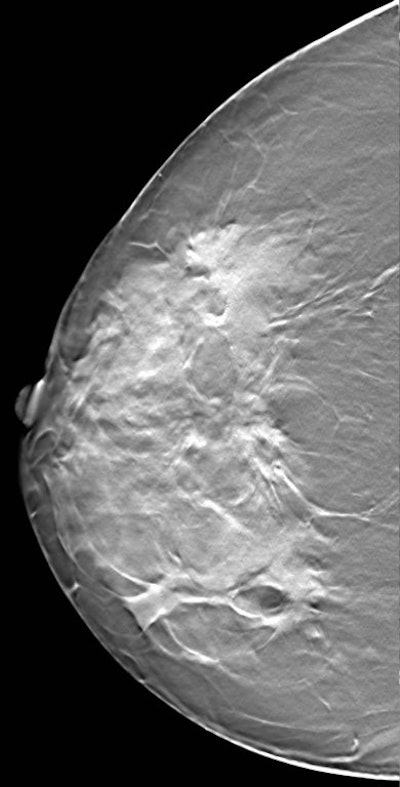
A Swedish start-up company called XCounter is developing a new 3D digital detector technology that it hopes will push the limits of x-ray-based imaging in areas such as mammography.
XCounter of Stockholm is headed by two space scientists and has come up with a novel digital detector design, called XCT, that captures digital 3D images directly, rather than modifying a 2D system to take 3D images.
XCounter's CEO is Tom Francke, an associate professor in astrophysics at the CERN particle physics laboratory near Geneva, Switzerland. His partner and CTO is Christer Ullberg, who worked for a Swedish space corporation building space instruments.
The two major differences in XCounter's technology and that of other 3D detection technologies are how they acquire 3D images, Francke explained.
"We acquire 3D images in a really dedicated three-dimensional way, (whereas) the tomosynthesis instruments in development in mammography by the other x-ray companies are really a modification of their 2D systems," he said. "We have a dedicated 3D system from the beginning, similar to CT."
A second major difference is in the design of the XCT detector, Francke said. Most digital x-ray systems use semiconductor electronics, such as amorphous silicon, amorphous selenium, or CMOS (complementary metal-oxide semiconductors) to detect x-rays. XCounter has a different approach, using noble gases as a detection medium with internal amplification of the x-ray signal and noise-free counting of each x-ray.
"We use a gas detector where the image is produced in the gas," Francke said. "Our job is to get the image out of the gas. It's a box of gas (krypton or xenon) with sheets of glass inside, and some simple electronics."
According to Francke, x-rays enter the gas, which is enclosed in a sealed box. Each x-ray collides with a gas atom and liberates charges (electrons) in the collision. This gas volume is surrounded by two sheets of glass, and by applying a voltage between the sheets the negative electrons are attracted toward the positive sheet.
The XCT design forces the electrons to knock out new electrons from the gas, which in turn knocks out additional new electrons, with the result that each incoming x-ray triggers an avalanche of charges. Electronics on the glass substrates count the avalanches one by one as they occur, with this data resulting in the final image.
The technique delivers an image that is sharper in detail to CT, using less radiation, Francke said. This is due to the technology's advantage with regard to position resolution and image acquisition. High position resolution helps resolve small details in an image. XCounter's technology also has a particularly short acquisition time, better enabling imaging of dynamic processes (for example, a heartbeat or contrast agent injections), he noted.
"CT cannot resolve very small details; the pixels are fairly large," Francke said. "And second, the dose levels we use are a fraction of CT doses. We can do 3D images with orders of magnitude lower doses than CT uses."
XCounter is developing three products based on the XCT detector. The first, XC Mammo-3T, is for 3D mammography; the second, XC MP-3T, is for 3D general body imaging (as an alternative to CT); and the third is XC Cardio-4T, a 3D cardiac imaging tool for dynamic images.
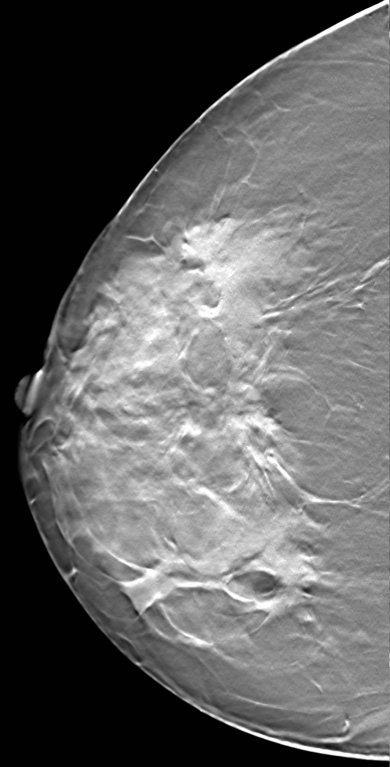 |
| A breast image collected with XCounter's XC Mammo-3T technology. |
The technology is a spin-off from space research in particle physics, Francke said, as both he and Ullberg have backgrounds in space research. The technology being developed in XCounter's Stockholm lab will initially be for clinical diagnosis, but it can also be used for nonmedical applications in industry and security.
The XC Mammo-3T mammography system is still in the clinical evaluation stage. The company plans to put the first mammography systems into hospitals next year, beginning the regulatory process. The current unit is being tested in Stockholm's Danderyd Hospital.
"We are setting up external partners for manufacturing of the system," Francke said. "As (systems) come out, we plan to place them in leading hospitals in Europe and the United States."
For now, that means XCounter is subcontracting for manufacturing only. The company is privately held, but has been on the London Stock Exchange since February 1 of this year.
By Robert Bruce
AuntMinnie.com contributing writer
March 20, 2006
Copyright © 2006 AuntMinnie.com





